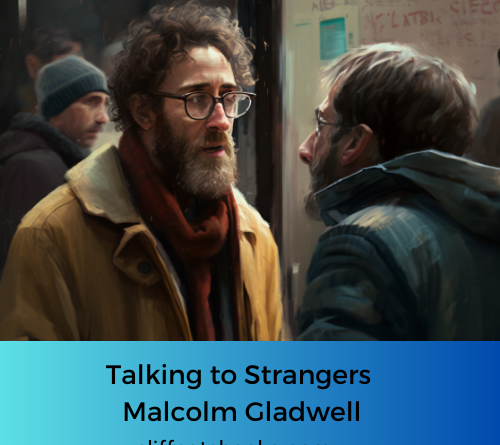Talking to Strangers – Malcolm Gladwell – Cliff Notes
Gladwell demonstrates that we as humans, at our core, are trusting souls and we default to truth i.e. we believe what we are being told. Unless we aren’t and we don’t. He goes on to show the difficulties in both positions and why each can pose us grave dangers in our interactions with both strangers and those we know. He leads us through real life examples of, defaulting to truth or defaulting to lies. Each side can be deeply flawed.
Gladwell examines two key puzzles.
- “Why can’t we tell when the stranger in front of us is lying to our face?”
- “How is it that meeting a stranger can sometimes make us worse at making sense of that person than not meeting them?”
To solve these puzzles Gladwell demonstrates the problems that lie within systems and people and how our own judgement and biases influence our ability to make decisions on strangers.
Part One – Default to Truth
He discusses various significant studies, one using students watching video, trying to decide guilt or innocence of the subject. This is contrasted against the number of judges who even when in the presence of an accused, can incorrectly determine guilt or innocence, marked against those who just studied the same accused’s background and criminal history.
Then he looks at how a spy was undetected in the US DIA. Her colleagues became suspicious, but not enough to default to the negative fact.
Part 2 – Transparency
Amanda Knox was tormented by the press and found guilty of murder because she didn’t behave in a way that we the people decided that she should. This also influences our ability to determine the truth. We expect people to act a certain way in specific circumstances and when they don’t it makes us feel like something’s up, even though there may not be.
This is enhanced with the “Friends” observation that you can still understand what is happening even with the sound off, because what we see is clear in the facial expressions and body language.
If we can’t reconcile what we are seeing with the facts in front of us, the default is to doubt not truth.
When alcohol is added to the mix, this influences our own ability to both make decisions and interpret the intentions of others. This was highlighted by Gladwell in the rising numbers of on campus rates of rape, all involving alcohol consumption by both parties. It’s hard enough to work out people’s intentions when we don’t have alcohol in our systems, and pretty much impossible to do so when we, or both you and the stranger, have had alcohol.
Coupling
I found this section the most difficult concept to grasp. It took me a couple of reads before I could begin to understand its significance in relation to talking to strangers.
Put simply, an action only occurs if another element or condition exists. Gladwell uses the high suicide rates in Britain against the availability of poisonous town gas.
So people’s actions and responses may only occur if certain criteria are met. The important thing I found here was to put the stranger in context when determining who they may be.
As Gladwell demonstrates, this is fraught with danger as no-one can fully contextualise another human. We can make assumptions, but doing so has already been shown to be highly dangerous to both strangers.
Coupling becomes extremely important as it relates to what happened to Sandra Bland. It forms a larger picture of identifying where crime occurs and how this can be counteracted within the context of Kansas Police trying to solve the overwhelming string of gun violence crimes. They determined that crime occurs in specific geographic areas and to concentrate on those areas with increased numbers and increased traffic stops. This resulted in a significant increase in arrests and removal of weapons from the street. When this technique was replicated, a key element of coupling was ignored, and police in other areas implementing the same system, only the increased traffic stops rather than concentrating them in areas of high crime. This is how Sandra Bland happened to be pulled over. The encounter demonstrates all the mistakes people make in talking to strangers in one tragic traffic stop. It also demonstrates what can happen when crucial elements of context are excluded.
My Comments
I don’t believe that Gladwell set out to persecute Encinia (the police officer who pulled over Sandra Bland) although Encinia’s comments can be interpreted as self-persecutory. It is the context that those comments were made that is the underlying problem that Gladwell has explained so eloquently.
He takes us step by step down the rabbit hole and explains all the concepts we need to understand to make an informed decision about how we can approach talking to strangers. The answer, I think, Gladwell is saying, is somewhere in the middle or at least an understanding that to only default to each extreme, is detrimental to our communication with each other but particularly with strangers.
We are lucky enough to be able to discuss issues of the day. It is through discussion that we develop an understanding. Informed discussion creates change. Gladwell has informed us. Our actions will create change, or not.
Get Talking to Strangers
